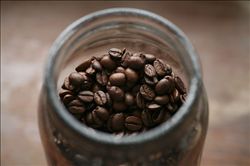Boutique coffee Kenyan coffee beans introduce coffee beans
Rare good coffee-known for its rich aroma and balanced acidity.
Coffee professionals consider Kenyan coffee to be one of their favorite products, because Kenyan coffee contains every feeling we want from a good cup of coffee. It has a wonderful, satisfying aroma, balanced acidity, well-proportioned particles and excellent fruity notes.
The charming woman coffee planter from Out of Africa
The charming woman coffee planter from Out of Africa
Coffee arrived in Kenya in the 19th century, when Ethiopian coffee drinks were imported to Kenya via South Yemen. But it wasn't until the early 20th century that Bourbon coffee trees were introduced by St. Austin's Mission (St. Austin Mission) was introduced.
Kenyan coffee is mostly grown at altitudes of 1,500 to 2,100 meters and harvested twice a year. To make sure only ripe berries are picked, people have to make about seven rounds through the woods. Kenyan coffee is grown by smallholders who harvest the coffee and send it fresh to cooperative washing stations, where the washed, dried coffee is sent to cooperatives in the state of "parchment beans"(i.e. beans coated with an endocarp)("parchment beans" are the final state of the beans before peeling). All coffees are collected together and growers charge average prices based on their actual quality. This method of buying and selling generally works well and is fair to both growers and consumers.
The Kenyan government takes the coffee industry extremely seriously, and it is illegal to cut down or destroy coffee trees here. Kenya's coffee buyers are world-class buyers of premium coffee, and no country grows, produces and sells coffee as continuously as Kenya. All coffee beans are first acquired by the Coffee Board of Kaeya (CBK), where they are appraised, graded and then sold at weekly auctions, where they are no longer graded. The Kenya Coffee Board acts only as an agent, collecting coffee samples and distributing them to buyers so that they can determine price and quality. Nairobi auctions are held for private exporters and the Kenya Coffee Board pays growers below-market prices. The best coffee grade is PB, followed by AA++, AA+, AA, AB, etc., in that order. Fine coffee is shiny, delicious and slightly aromatic.
The auction is also organized to meet the needs of the distributor. These auctions usually sell small quantities (3 - 6 tons each) and have samples bearing the grower's logo for buyers to appreciate. After auction, exporters pack according to different flavors, different qualities and quantities required by blenders. This provides a great deal of flexibility for the deployer. Quality-conscious germans and nordics are long-term buyers of kenyan coffee.
On an international scale, the growth in Kenyan coffee volumes was remarkable, with exports rising from 800,000 bags in 1969 - 70 to 2 million bags in 1985 - 86. Production is now stable at 1.6 million bags, averaging about 650 kg per hectare.
The average price of coffee in Kenya has been rising since before the recent spike. Prices in 1993 - 1994 were 50 percent higher than they had been twelve months earlier. Price increases are mainly the result of increased demand.
Some buyers, especially Japanese ones, have complained about Kenya's coffee system. Some traders say the quality of coffee in the country has declined, pointing out that buying directly from farmers may be one way to improve quality. Either way, kenya's detailed regulations and procedures are a model for all coffee-producing countries.
Kenyan coffee was further made famous by the Hollywood film Out of Africa. Karen, played by Maryl Streep, is a writer and coffee planter. Many people probably remember the breathtaking views and magnificent sunsets from the film, but even more memorable is Karen's dream of owning a coffee plantation in Africa

Important Notice :
前街咖啡 FrontStreet Coffee has moved to new addredd:
FrontStreet Coffee Address: 315,Donghua East Road,GuangZhou
Tel:020 38364473
- Prev

Ethiopian coffee beans Ethiopian coffee beans
The birthplace of coffee-Ethiopia. The coffee tree originated in Ethiopia, where it was originally a wild plant, and the name coffee comes from the Ethiopian town of Kaffa. In fact, many coffee trees in Ethiopia are still wild plants, and the coffee grown on this coffee tree is full of particles and slightly fragrant. Humans may have been as early as the 9th century
- Next

Boutique coffee Kenyan Coffee Manor Kenyan Coffee producing area
The history of coffee cultivation in Colombia can be traced back to the Spanish colonial era in the 16th century, and there are many theories about the history of coffee in Colombia: one: it is said to come from the island of Haiti in the Caribbean and from El Salvador in Central America. Second: in 1808, a priest introduced coffee beans to Colombia for the first time from the French Antilles via Venezuela. One of them
Related
- Does Rose Summer choose Blue, Green or Red? Detailed explanation of Rose Summer Coffee plots and Classification in Panamanian Jade Manor
- What is the difference between the origin, producing area, processing plant, cooperative and manor of coffee beans?
- How fine does the espresso powder fit? how to grind the espresso?
- Sca coffee roasting degree color card coffee roasting degree 8 roasting color values what do you mean?
- The practice of lattes: how to make lattes at home
- Introduction to Indonesian Fine Coffee beans-- Java Coffee producing area of Indonesian Arabica Coffee
- How much will the flavor of light and medium roasted rose summer be expressed? What baking level is rose summer suitable for?
- Introduction to the characteristics of washing, sun-drying or wet-planing coffee commonly used in Mantenin, Indonesia
- Price characteristics of Arabica Coffee Bean Starbucks introduction to Manning Coffee Bean Taste producing area Variety Manor
- What is the authentic Yega flavor? What are the flavor characteristics of the really excellent Yejasuffi coffee beans?

